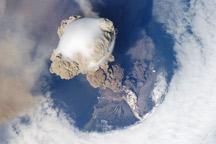<!-- /* Font Definitions */ @font-face {font-family:"Arial Unicode MS"; panose-1:2 11 6 4 2 2 2 2 2 4; mso-font-charset:128; mso-generic-font-family:swiss; mso-font-pitch:variable; mso-font-signature:-1 -369098753 63 0 4129279 0;} @font-face {font-family:"\@Arial Unicode MS"; panose-1:2 11 6 4 2 2 2 2 2 4; mso-font-charset:128; mso-generic-font-family:swiss; mso-font-pitch:variable; mso-font-signature:-1 -369098753 63 0 4129279 0;} /* Style Definitions */ p.MsoNormal, li.MsoNormal, div.MsoNormal {mso-style-parent:""; margin:0cm; margin-bottom:.0001pt; mso-pagination:widow-orphan; font-size:12.0pt; font-family:"Times New Roman"; mso-fareast-font-family:"Times New Roman"; mso-ansi-language:EN-GB;} h1 {mso-style-next:Szövegtörzs; margin-top:0cm; margin-right:0cm; margin-bottom:12.0pt; margin-left:0cm; mso-pagination:widow-orphan lines-together; page-break-after:avoid; mso-outline-level:1; font-size:12.0pt; mso-bidi-font-size:10.0pt; font-family:"Times New Roman"; mso-fareast-font-family:"Times New Roman"; letter-spacing:-.5pt; mso-font-kerning:14.0pt; mso-ansi-language:EN-GB; font-weight:bold; mso-bidi-font-weight:normal;} h2 {margin-right:0cm; mso-margin-top-alt:auto; mso-margin-bottom-alt:auto; margin-left:0cm; mso-pagination:widow-orphan; mso-outline-level:2; font-size:18.0pt; font-family:"Arial Unicode MS"; font-weight:bold;} h3 {mso-style-next:Normál; margin-top:12.0pt; margin-right:0cm; margin-bottom:6.0pt; margin-left:0cm; mso-pagination:widow-orphan; page-break-after:avoid; mso-outline-level:3; font-size:12.0pt; mso-bidi-font-size:13.0pt; font-family:"Times New Roman"; mso-fareast-font-family:"Times New Roman"; mso-bidi-font-family:Arial; mso-ansi-language:EN-GB; font-weight:bold;} p.MsoBodyText, li.MsoBodyText, div.MsoBodyText {margin-top:6.0pt; margin-right:0cm; margin-bottom:0cm; margin-left:0cm; margin-bottom:.0001pt; text-align:justify; mso-pagination:widow-orphan; font-size:12.0pt; mso-bidi-font-size:10.0pt; font-family:"Times New Roman"; mso-fareast-font-family:"Times New Roman"; mso-ansi-language:EN-GB;} a:link, span.MsoHyperlink {color:blue; text-decoration:underline; text-underline:single;} a:visited, span.MsoHyperlinkFollowed {color:purple; text-decoration:underline; text-underline:single;} p {margin-right:0cm; mso-margin-top-alt:auto; mso-margin-bottom-alt:auto; margin-left:0cm; mso-pagination:widow-orphan; font-size:12.0pt; font-family:"Arial Unicode MS";} span.preview {mso-style-name:preview;} @page Section1 {size:612.0pt 792.0pt; margin:70.85pt 70.85pt 70.85pt 70.85pt; mso-header-margin:35.4pt; mso-footer-margin:35.4pt; mso-paper-source:0;} div.Section1 {page:Section1;} -->Atmospheric scientists are interested in tracking sulfur dioxide because it can endanger public health and because it can affect global climate. In mid-June 2009, Sarychev Peak Volcano on Matua Island in the northwest Pacific began a series of eruptions of large amounts of ash.
The picture was taken by NASA on 12th of June, 2009.
http://earthobservatory.nasa.gov/NaturalHazards/view.php?id=38985
